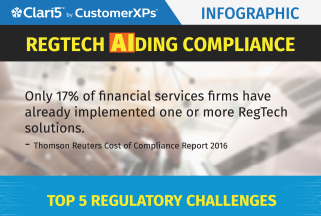
With increasing diversity in the banking customers’ age groups, needs, values, priorities and perspectives, banks interact with several ‘generations’ of customers. Multigeneration banking evolved from the need for providing personalized and unique experiences to a variety of customer segments.
Changing demographics, incomes, attitudes and behaviours along with instant availability of information have empowered the banking customer to demand better choice, high quality service, instant response and transparency.
Banks are exploring super customized customer experience methodologies to retain existing customers and attract new ones. As a technology, AI has been helping banks interpret precise customer preferences to help them further personalize products and services.
Millennials: Living For The Day
Millennials or GenY-ers (25-34 years) have grown up amidst a liberal approach to politics and economics. Most millennials are driven by a ‘spend now, save later’ viewpoint. Primary financial behaviours include multilocation/multidevice account checking, online credit purchases and loan products analysis. Educated and mobile / internet savvy, they expect their banks to be real-time responsive. Being relatively less financial savvy, they expect quick assistance to manage activities such as reward points, home/car loans and understanding card offers. They are not renowned for their brand-loyalty and preferences are considerably influenced by own and peer experiences.
GenX: Saving For A Rainy Day
GenX-ers (35-49 years) have worked hard to accumulate wealth and have considerable faith in financial systems. Having experienced conventional banking, they have fairly clear expectations from banks and how digital banking must service them. They are relatively more loyal to their financial institutions and adapt readily to new technology if it helps keep their savings secure and enable growing it. They expect sound investment advice, tax strategies and secure investment avenues, but they are cognizant of frequent reports of data leaks, scams, and incidents of fraud.
Baby Boomers: Dear Prudence
Baby boomers (50+ years) as banking customers form a comparatively smaller segment (27%) than the millennials (32%) and the genX-ers (41%). Close to retiring from active work life or already retired, baby boomers are fairly frugal with spends but explore deals and offers (rebates, discounts, schemes, cashbacks, rewards, etc.). They are also known to bank with multiple financial institutions expecting to benefit from favorable deals. Cautious about their savings, they are open to investment opportunities that offer better rewards with minimum risk. Baby boomers also have relatively more cash liquidity.
Addressing Multigenerational Banking with AI
Engaging well with the primary segments with highly customized and innovative products and programs with higher convenience levels is key for banks to stay competitive. The banking experience has to be tailored to suit the specific nuances and intricacies involved in engaging with the members of the customer segments.
Delivering personalized banking experience start with gaining a deep and wide understanding about the customers and their needs in detail and this can be onerous.
AI can help banks achieve the ultimate but elusive goal of making every customer feel special. AI makes it possible to quickly gain and analyze contextual customer insights and aid in custom designing innovative solutions. Banks are now developing AI-based systems to provide highly personalized experiences.
Banks expect AI to be their primary mode of interaction with customers over the next 3 years. AI has already been delivering exponential value to banks:
- Cross-sell / Upsell: AI solutions are built to process large data volumes at very high speeds to extract and deliver insights. This enables banks to proactively connect with the right customer with the right product or service offering at the right time.
- Competition: AI-led market analytics help banks tweak products and services and configure new and more competitive innovations faster. AI helps anticipate customer needs more accurately and developing highly personalized competitive products becomes easier.
- CRM: AI is far more accurate than humans at recognizing speech, images, text, patterns of online behavior. AI is used for payments, money management and for robot-advice, particularly in the areas of intelligent digital assistants that handle regular customer service enquiries and tasks.
- Advisory: AI-driven automated financial advisors and planners help customers in each segment take financial decisions. They monitor personal portfolios and recommend effective avenues of investments, loans and mortgages among many other services.
- Student Loans: Banks use AI to identify ‘student loan customers’ with better cashflow enabling them to pay off loans quicker. Using predictive analysis of individual behavior and spending patterns, they help their young customers accelerate loan repayment. This lowers the burden of servicing their debt with reduced interest rates and accelerated payment.
- Fraud Detection: AI-based systems are helping synthesize intelligence in real-time from across the banking enterprise as well as from external channels with lower false positives.
AI helps banks have a ‘segment of 1’ approach to customer experience by synthesizing and delivering highly contextual wisdom from across all banking channels in real-time or near real-time.
AI-based banking solutions study social media activities and compile data on purchase history, search history in combination with standard and hygiene information like bank details, loan history and credit card usage to derive a credit scoring known as Social Credit Scoring. This information is then used as the basis to design/market new products and services targeted at a specific genre of customers, in addition to business forecasting, risk analysis and creating customer awareness.
Banks are already experiencing an era of even more generational diversity: diverse platforms, diverse needs and diverse preferences. The challenge lies in sensing and addressing needs with a human brain like intelligence.
From innovative hyper-customized products and services to high precision customer targeting to shrinking operational costs to delivering customer wow faster, real-time AI-powered multigeneration banking is set to deliver exponentially more to every customer generation.
References:













